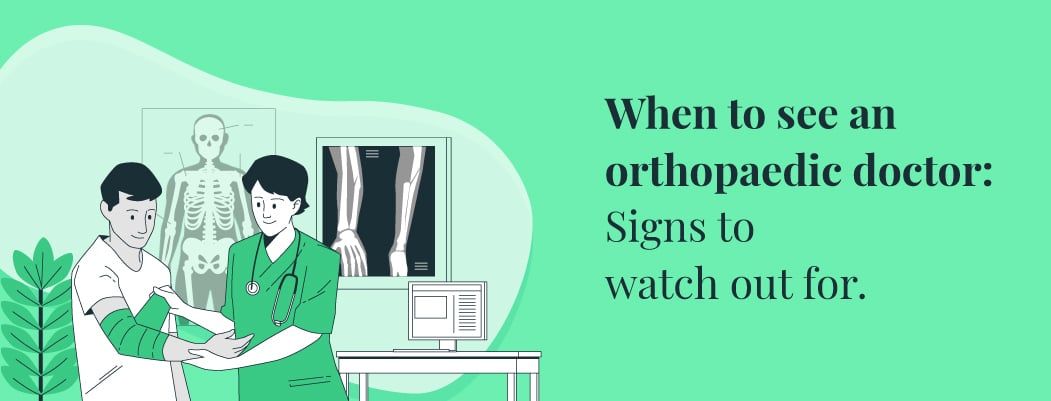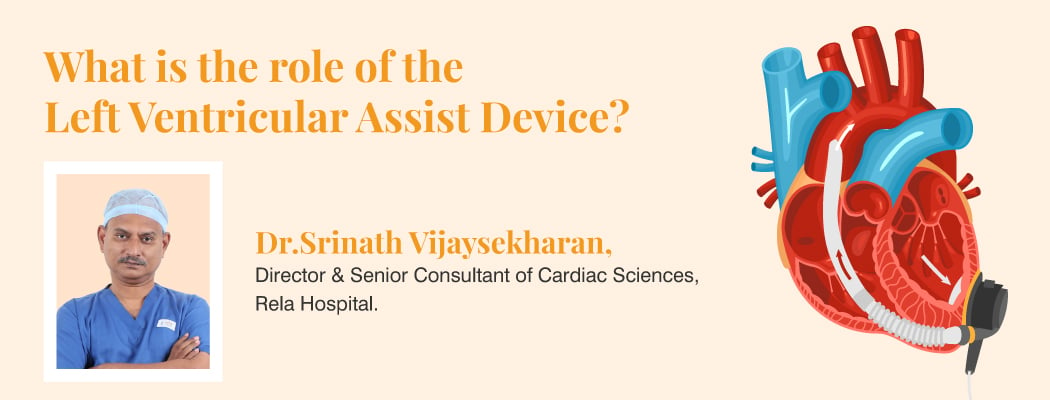When to see an orthopedic doctor?
March 9, 2023

Our musculoskeletal system, composed of bones, muscles, joints, and ligaments, is responsible for our body’s movement and support. Any injury or damage to this system can cause pain, discomfort, and reduced mobility. An Orthopedic doctor is a medical specialist who focuses on diagnosing, treating, and preventing injuries and disorders related to the musculoskeletal system.
1. Pain and Discomfort
One of the most common reasons for consulting an Orthopedic doctor is pain and discomfort in the musculoskeletal system. This can be acute or chronic and can affect any part of the body, such as the back, neck, shoulders, hips, knees, and ankles. In addition, pain can result from an injury, overuse, wear and tear, or underlying medical conditions such as arthritis or osteoporosis. Orthopedic doctors are experts in diagnosing the root cause of pain and discomfort and providing effective treatment options, including medications, physical therapy, and surgery, if necessary.
2. Limited Mobility and Function
If you are experiencing difficulty performing daily activities, such as walking, climbing stairs, or lifting objects, you may need to see an Orthopaedic doctor. Limited mobility and function can be caused by injuries or medical conditions that affect the musculoskeletal system, such as fractures, sprains, strains, osteoarthritis, rheumatoid arthritis, and tendonitis. An Orthopaedic doctor can assess your condition and recommend appropriate treatment options to improve your mobility and function.
Deformities
3. Deformities
Deformities in the musculoskeletal system, such as bowlegs, knock knees, scoliosis, and clubfoot, can cause discomfort, pain, and reduced mobility. These deformities can be present from birth or can develop due to injuries, medical conditions, or poor posture. An Orthopaedic doctor can assess your condition and recommend appropriate treatment options, such as bracing, casting, or surgery, to correct the deformity and improve your quality of life.
4. Sports Injuries
Athletes and active individuals are at a higher risk of sustaining sports injuries, such as sprains, strains, fractures, and dislocations. These injuries can occur due to overuse, sudden impact, or poor technique. Orthopaedic doctors are experienced in sports injuries and can provide effective treatment options, such as rest, ice, compression, elevation (RICE), physical therapy, and surgery, if necessary.
5. Work-Related Injuries
Work-related injuries can affect any body part, including the musculoskeletal system. These injuries can occur due to repetitive motions, overexertion, or accidents. Orthopaedic doctors can assess your condition and recommend appropriate treatment options, such as rest, physical therapy, and surgery, if necessary, to help you recover and return to work.
6. Joint Pain and Stiffness
Joint pain and stiffness can be a sign of underlying medical conditions, such as osteoarthritis, rheumatoid arthritis, and gout. These conditions can cause inflammation and damage to the joints, resulting in pain, stiffness, and reduced mobility. An Orthopaedic doctor can diagnose the underlying condition and recommend appropriate treatment options, such as medications, injections, physical therapy, and surgery, if necessary.
7. Numbness and Tingling
Numbness and tingling in the arms, hands, legs, or feet can be a sign of nerve damage or compression. In addition, medical conditions like carpal tunnel syndrome, sciatica, and herniated disc can cause these symptoms. Orthopaedic doctors can evaluate your symptoms and recommend appropriate treatment options, such as medications, physical therapy, and surgery.
8. Bone and Joint Infections
Infections of the bones and joints can cause pain, swelling, and fever. These infections can occur due to injuries, surgery, or underlying medical conditions like diabetes or HIV. Orthopaedic doctors can diagnose the infection and recommend appropriate treatment options, such as antibiotics, drainage, and surgery, if necessary, to prevent further damage and promote healing.
9. Sudden Onset of Symptoms
If you experience a sudden onset of severe pain, swelling, or redness in a joint or limb may be a sign of a serious medical condition, such as a blood clot, fracture, or dislocation. It is essential to seek immediate medical attention to prevent further damage and promote healing. Orthopaedic doctors are trained to diagnose and treat these conditions and can provide timely and effective treatment options.
10. Failed Previous Treatment
Suppose you have previously undergone treatment for a musculoskeletal condition, such as medication, physical therapy, or surgery, and still experience pain or limited mobility. In that case, it may be time to consult an Orthopaedic doctor. Orthopaedic doctors can evaluate your condition and recommend alternative treatment options, such as minimally invasive surgery or joint replacement surgery, to help you achieve better outcomes and improved quality of life.
Summary
In conclusion, various signs and symptoms indicate the need for an Orthopaedic consultation. For example, suppose you are experiencing pain, limited mobility, deformities, sports injuries, work-related injuries, joint pain and stiffness, numbness and tingling, bone and joint infections, sudden onset of symptoms, or failed previous treatment. In that case, it may be time to see an Orthopaedic doctor. Early diagnosis and treatment can help prevent further damage and promote healing. In addition, orthopaedic doctors are trained to provide timely and effective treatment options to help you recover and improve your quality of life.
People also ask
1. When should I visit an Orthopaedic doctor?
You should consider visiting an orthopaedic doctor if you experience any of the following symptoms or conditions:
- Pain in your bones or joints that doesn’t go away after a few days
- Limited mobility or difficulty moving a joint or limb
- Deformities or misaligned bones or joints
- Sports injuries or work-related injuries that affect your bones or joints
- Joint pain and stiffness, especially in the morning or after prolonged inactivity
- Numbness and tingling in your arms or legs
- Bone and joint infections
- Sudden onset of symptoms, such as severe pain, swelling, or redness in a joint or limb
- Failed previous treatment for a musculoskeletal condition
2. Why would you be referred to an Orthopaedic?
Your primary care doctor may refer you to an orthopaedic doctor if you have a musculoskeletal condition requiring specialised treatment or need surgery. You may also be referred to an orthopaedic doctor if you have a complex condition requiring a multidisciplinary approach, such as joint replacement or spine surgery.
3. What is the most common Orthopaedic condition?
The most common orthopaedic condition is osteoarthritis, a degenerative joint disease affecting millions worldwide. Osteoarthritis occurs when the cartilage that cushions the joints wears down over time, causing pain, stiffness, and limited mobility.
What are the symptoms of Orthopaedic?
- Pain in the bones or joints
- Limited mobility or difficulty moving a joint or limb
- Deformities or misaligned bones or joints
- Swelling, redness, or warmth in a joint or limb
- Joint pain and stiffness, especially in the morning or after prolonged inactivity
- Numbness and tingling in the arms or legs
- Muscle weakness or atrophy
- Difficulty performing everyday activities, such as walking, climbing stairs, or lifting objects








